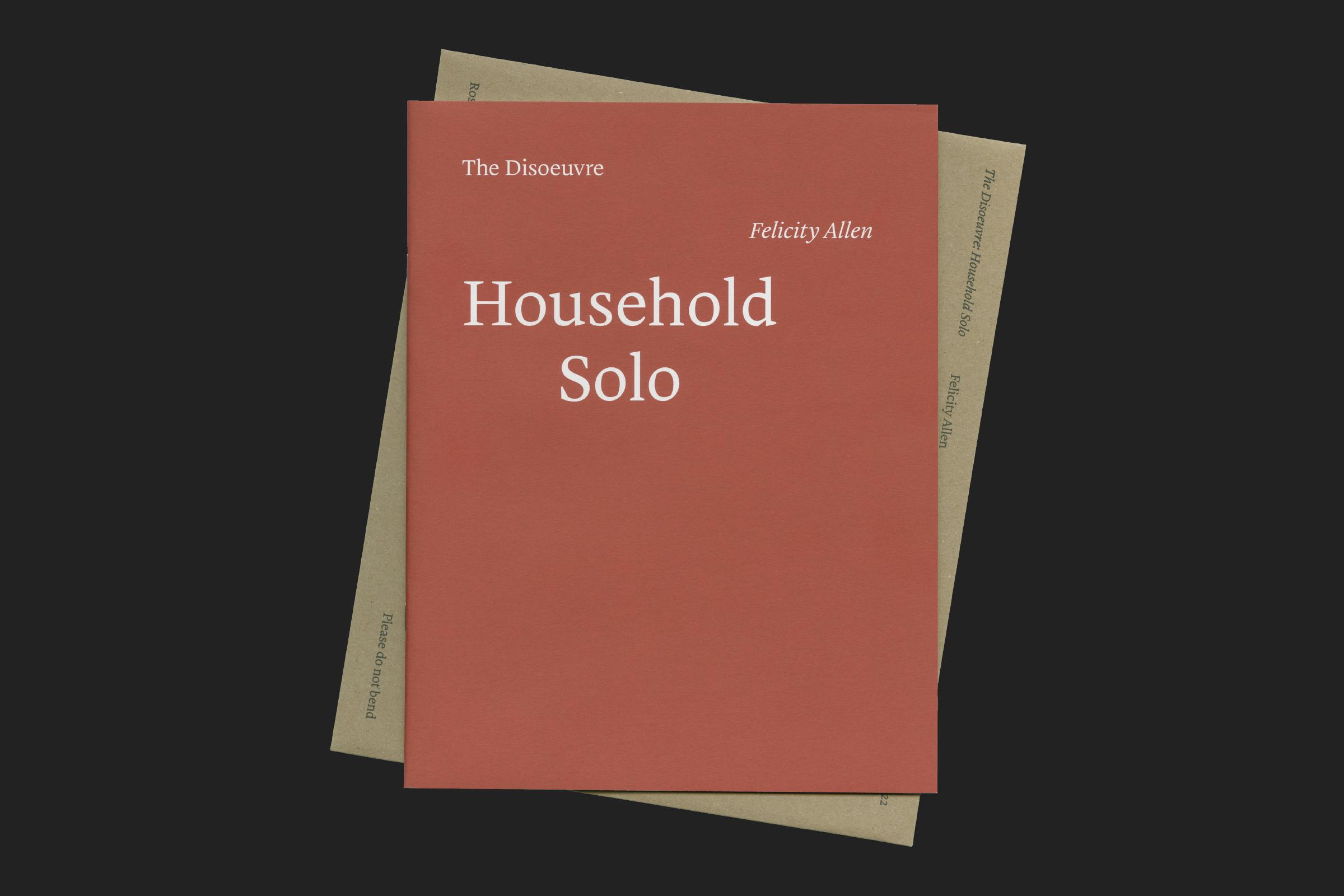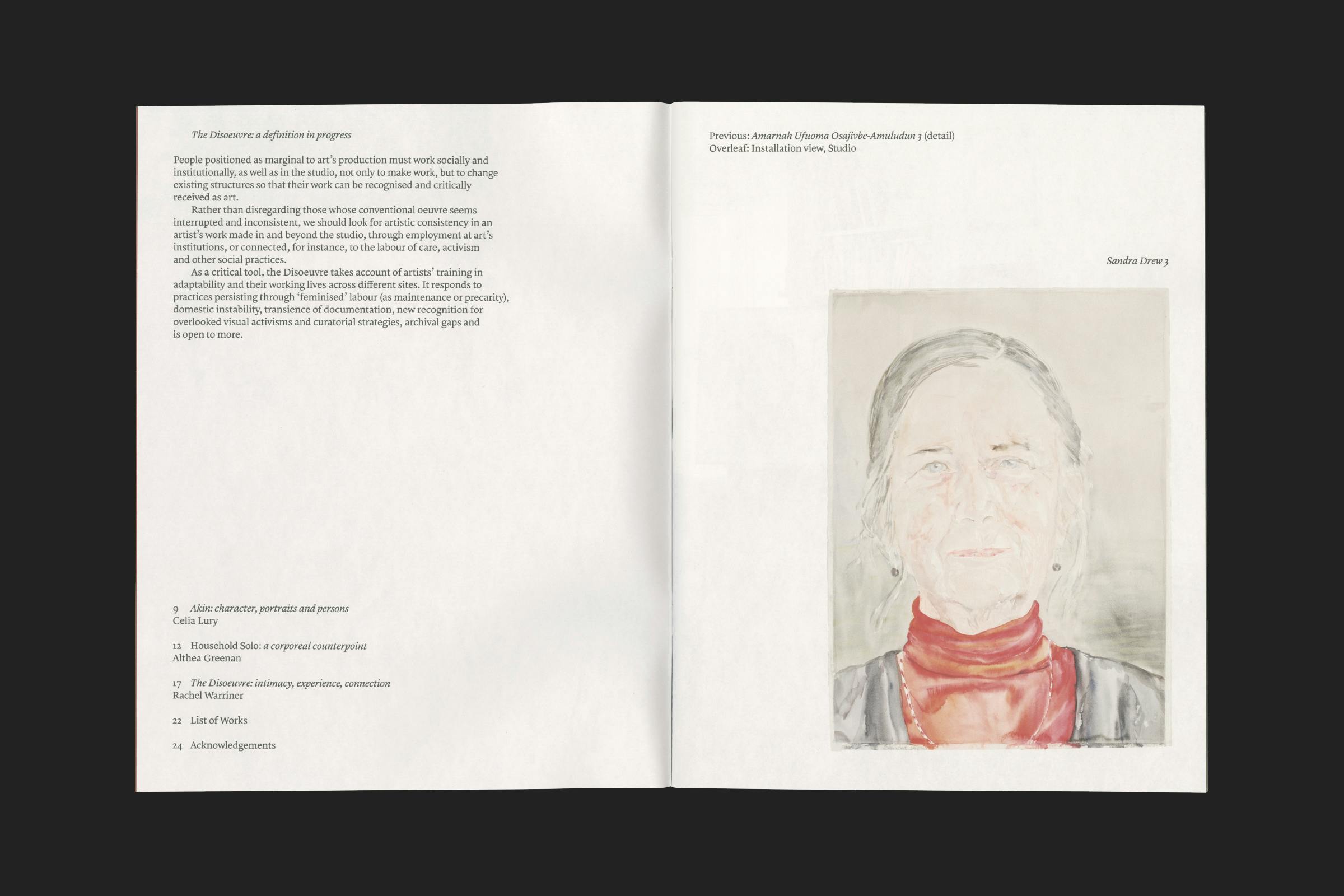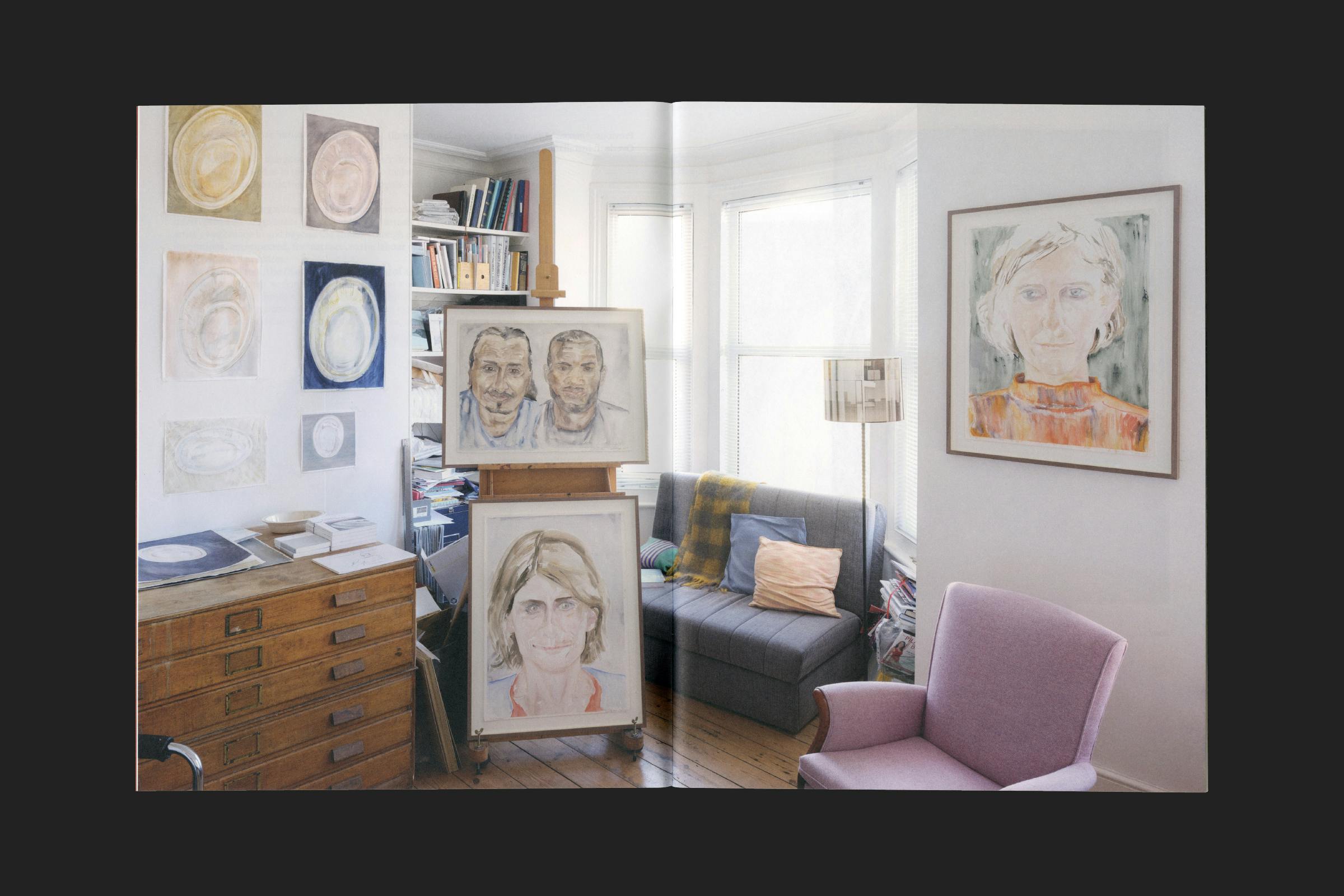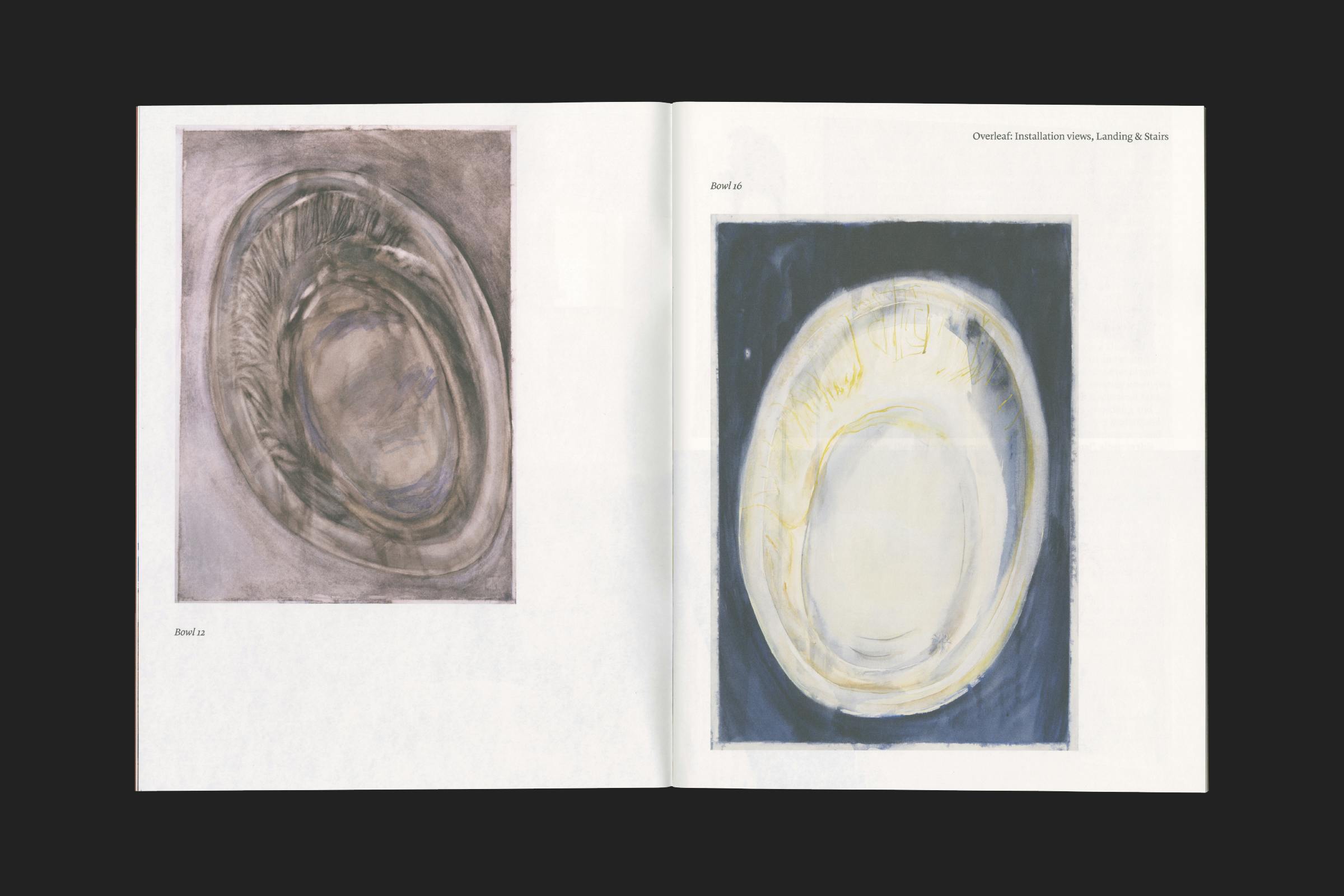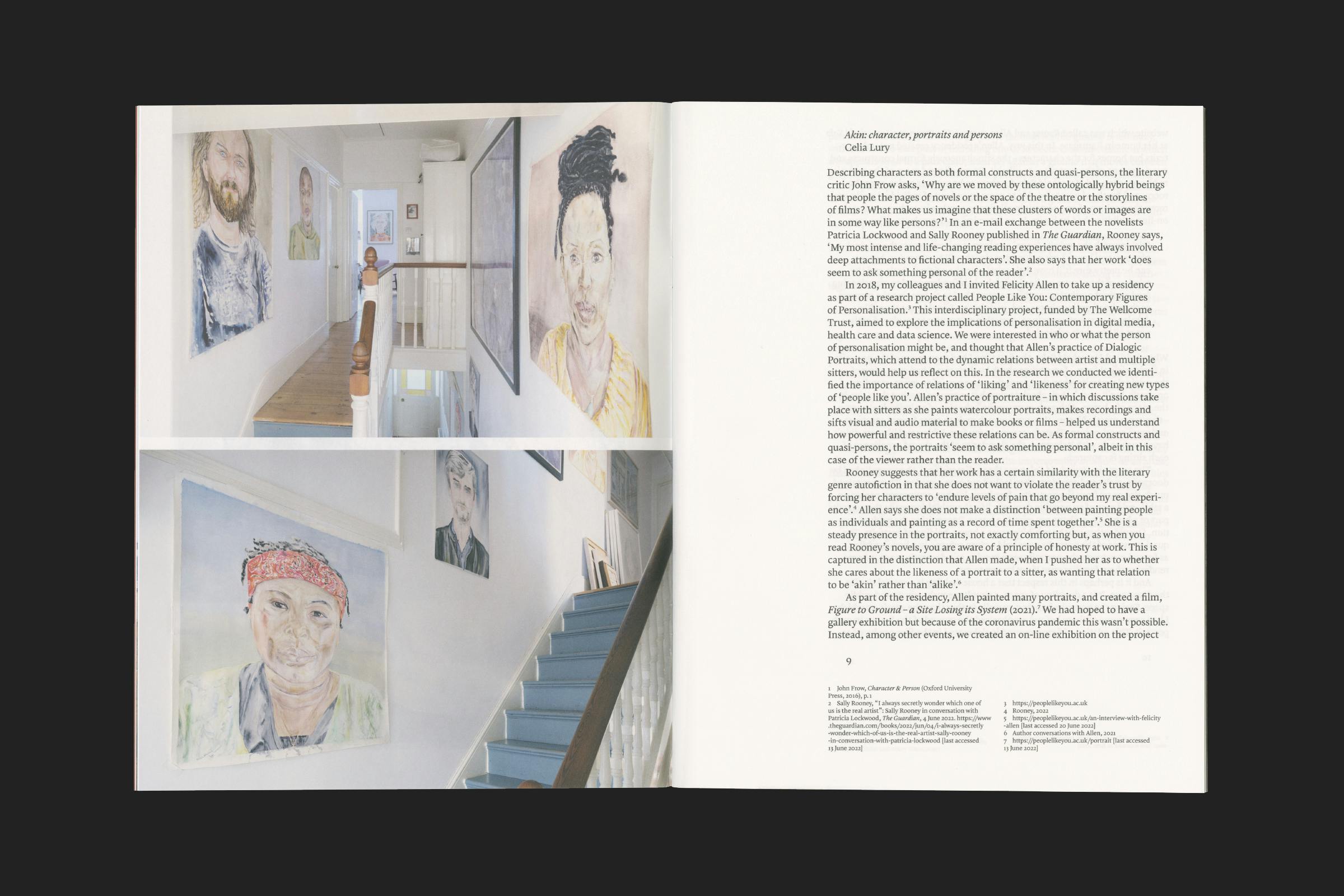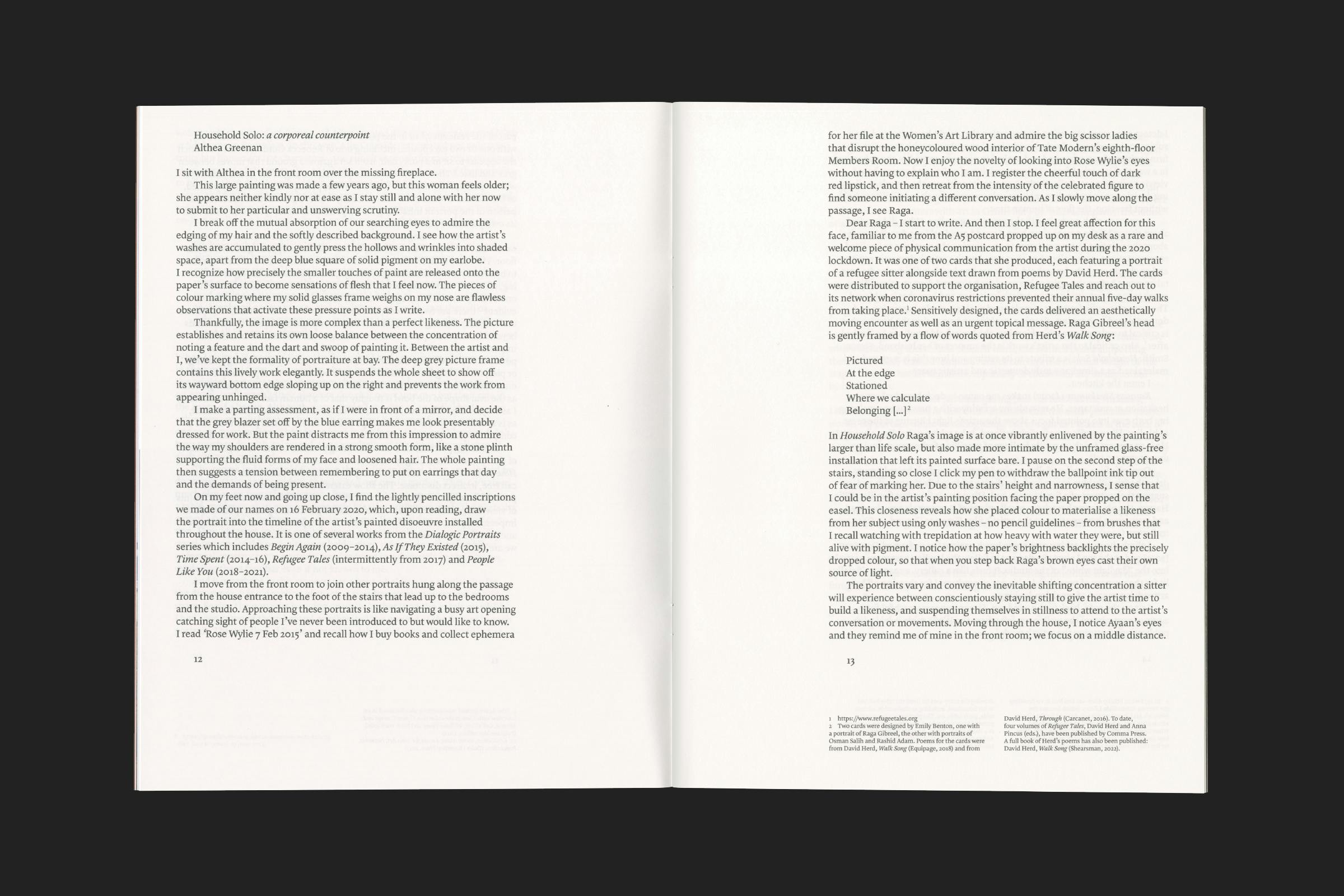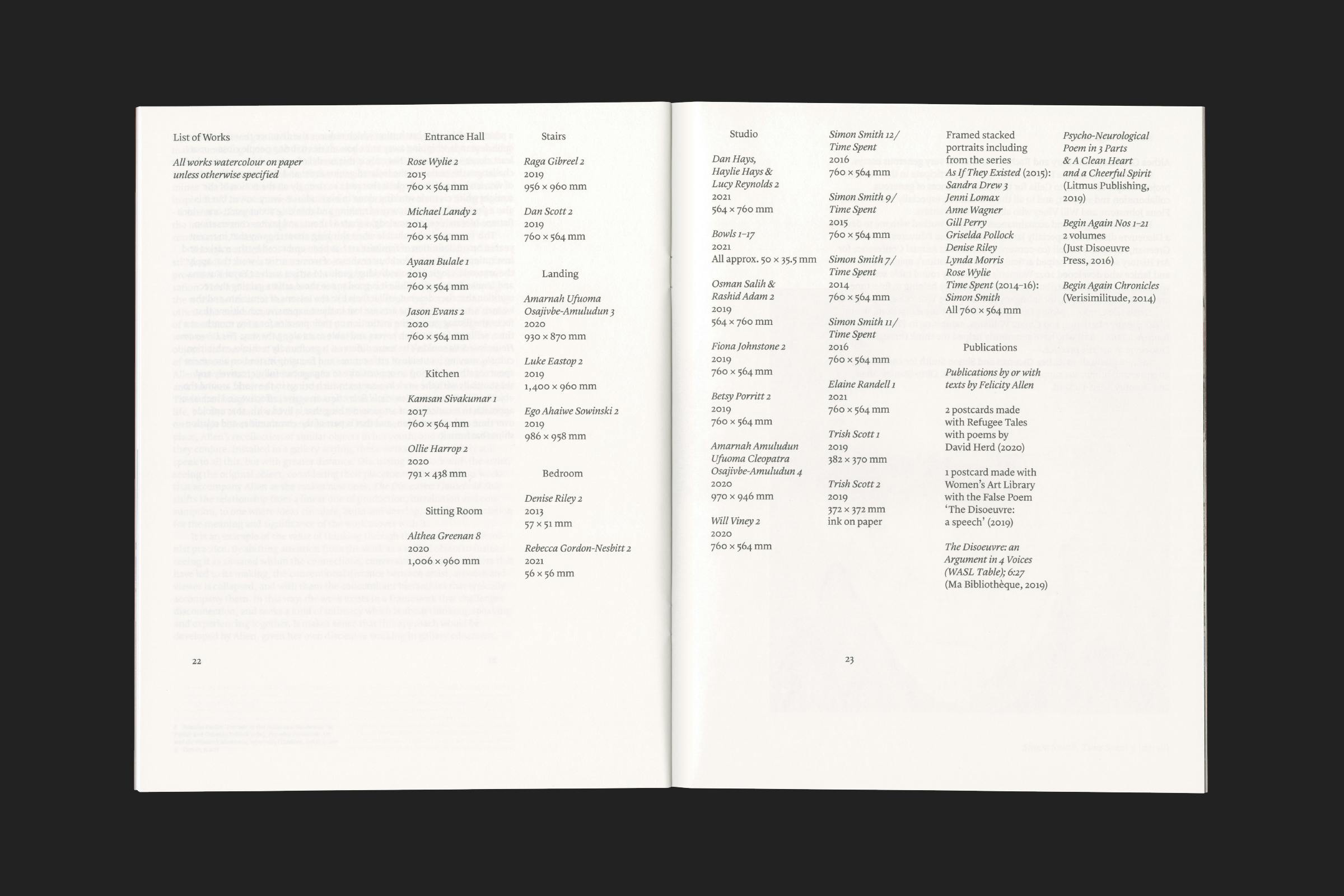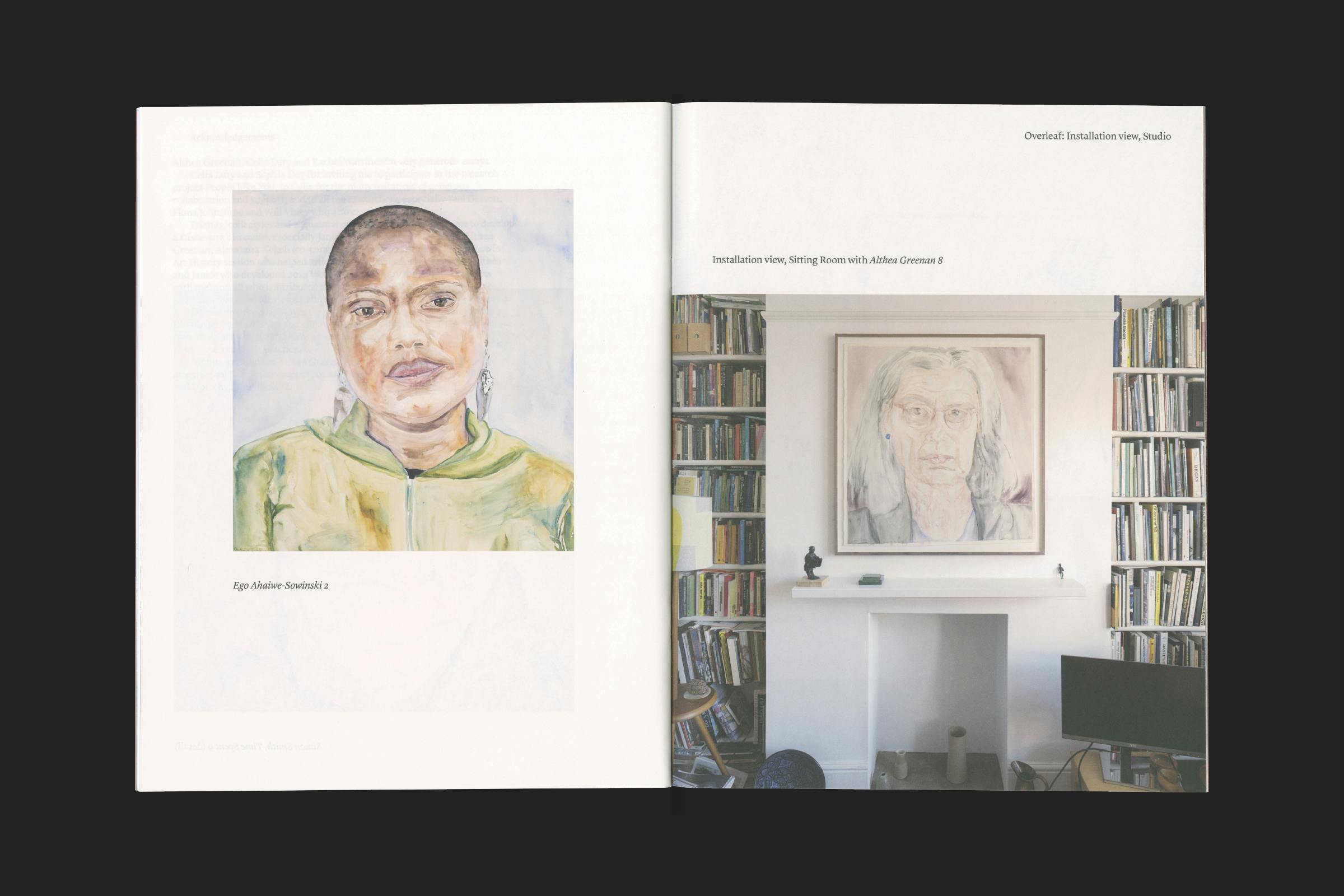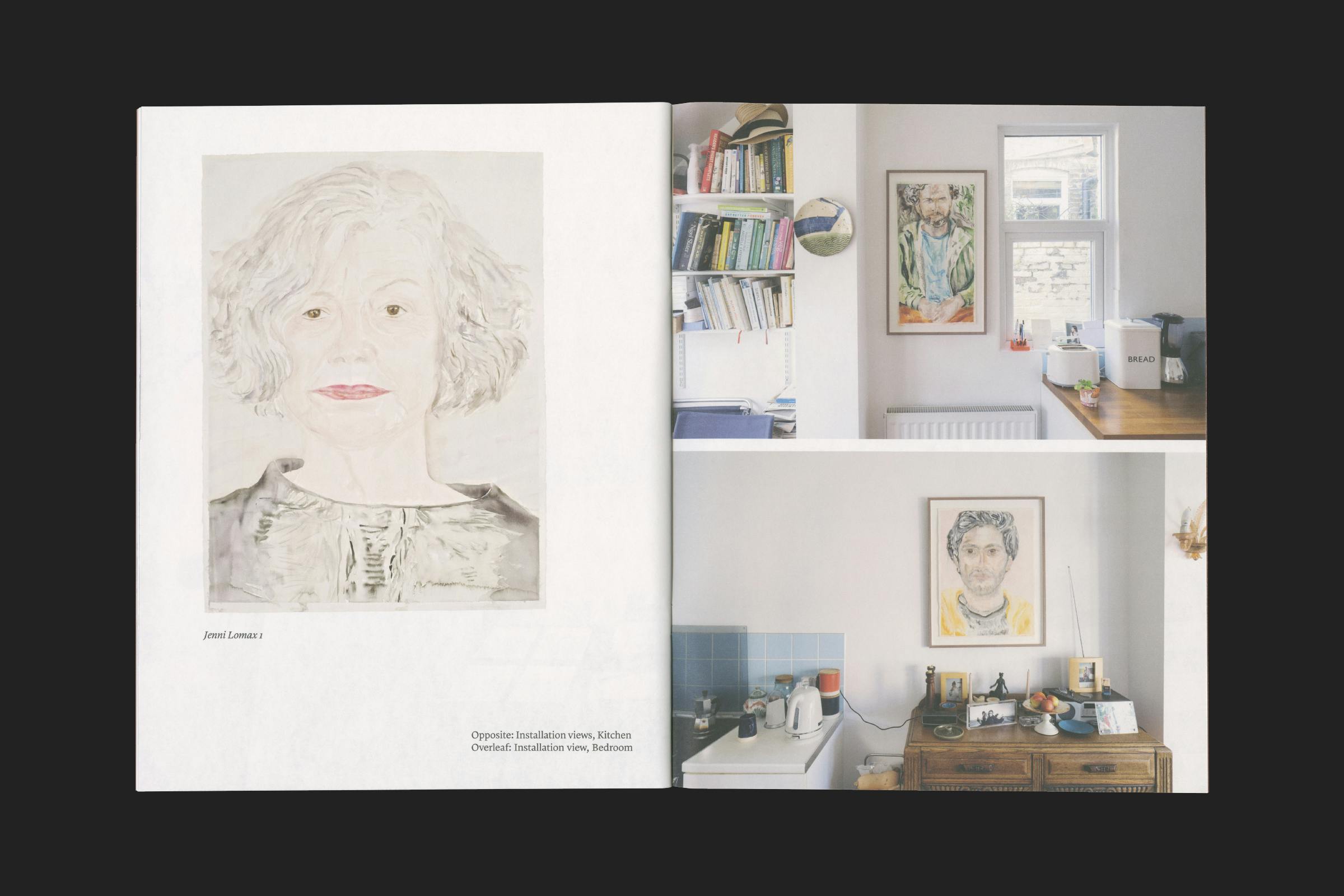
The Disoeuvre: Felicity Allen: Household Solo
The Disoeuvre: Felicity Allen: Household Solo is the first in a series of Household exhibitions devised to explore and develop the concept of the ‘Disoeuvre’*, a term by Allen to encompass artists and creators who are marginal to the traditional art market.
This publication records an exhibition of portraits and abstractions created by Allen and displayed around her coastal residence in Ramsgate, UK. Accompanied by texts exploring the exhibition and wider themes by Celia Lury, Althea Greenan and Rachel Warriner.
Client
Roseville
Category
Editor
Clare Carolin
Format
210 × 270 mm
Extent
32pp
Binding
Saddle Stitched
Typeface
Lygia
The publication consists of two sections: a central 16 pages of text wrapped by a further 16 pages of imagery consisting of a mixture of installation shots that walk you around the house, interspersed with artwork and details. It sits within a printed envelope that acts as a vehicle to ship the book, and as a cover to protect it.
An identity was created for the publisher, Roseville, (taking the name of Allen’s house and embellishing it with a rose icon), and logos for the book series, The Disoeuvre, using typography as a means to bring everything together.
The identity and texts are all set in Lygia by independent type designer, Flavia Zimbardi. Lygia explores the duality of sharp and round forms found within the work of Brazilian neo-concrete artist Lygia Clark, along with with stylistic cues and historical references from 16th-century traditional lettering. Twisting the historical narrative to create a contemporary style that sits against the grain.
* People positioned as marginal to art’s production must work socially and institutionally, as well as in the studio, not only to make work, but to change existing structures so that their work can be recognised and critically received as art.
Rather than disregarding those whose conventional oeuvre seems interrupted and inconsistent, we should look for artistic consistency in an artist’s work made in and beyond the studio, through employment at art’s institutions, or connected, for instance, to the labour of care, activism and other social practices.
As a critical tool, the Disoeuvre takes account of artists’ training in adaptability and their working lives across different sites. It responds to practices persisting through ‘feminised’ labour (as maintenance or precarity), domestic instability, transience of documentation, new recognition for overlooked visual activisms and curatorial strategies, archival gaps and is open to more.
Felicity Allen, The Disoeuvre: a definition in progress (2022)
